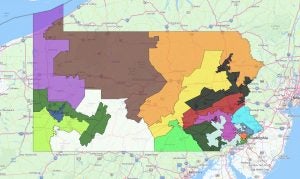How difficult is it to redistrict Pennsylvania? ‘Not very,’ say area eighth-graders
Pennsylvania’s contentious congressional map has spurred disagreement among the state judiciary, lawmakers, and the governor. Yet students came up with several solutions.
Listen 3:26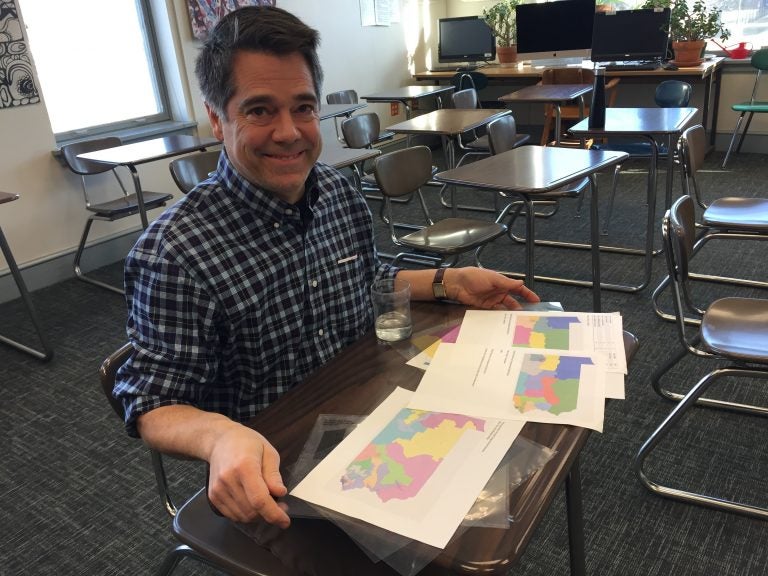
Teacher Jon Kimmel in his classroom at Westtown School in Chester County, Pa. (Avi Wolfman-Arent/WHYY)
Viewed from a distance, Westtown School in Chester County, Pennsylvania seems like precisely the place you’d expect a conversation on redistricting and gerrymandering. The Quaker private school sits at the juncture of two especially contorted congressional districts — the 6th and 7th — and counts among its core values “peace and justice in community and in the world.”
You wouldn’t, however, expect this theoretical redistricting conversation to emerge from Jon Kimmel’s first-period math class, where polynomials tend to take precedence over politics.
Like anyone teaching math to eighth-graders, Kimmel is always searching for real-world parallels to spice up his lesson plans. Just such a parallel fell into his lap earlier this year when he gave his students an exercise requiring them to group shapes distributed across a grid.
One of the students told Kimmel the puzzle was “a lot like gerrymandering,” and from there a quest began.
Kimmel asked his students if they could redraw Pennsylvania’s famously contentious congressional map, now the topic of ongoing disagreement between Republican leaders in the General Assembly and Gov. Tom Wolf.
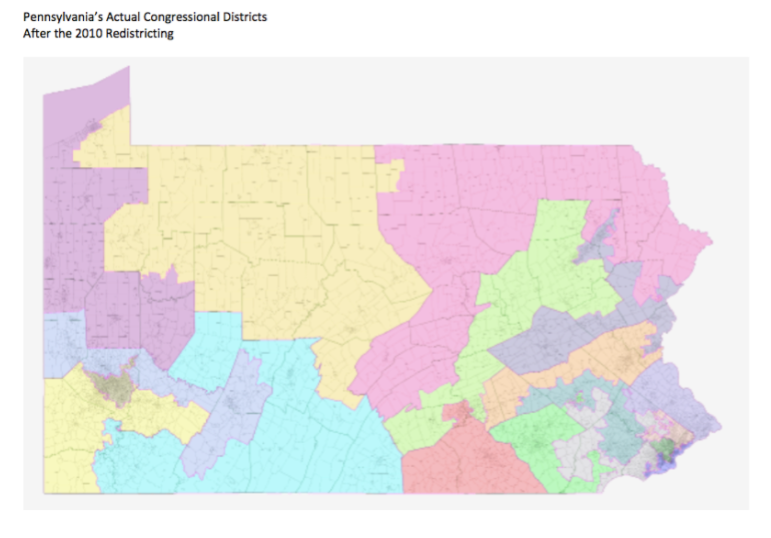
Given all the hoopla and headlines, the eight-graders assumed drawing a new map would be tough.
Turns out, “it’s not very difficult,” student Isaac Lind said matter-of-factly.
“I mean, it didn’t take that long for us to complete these maps.”
In just 10 class periods, the students blended census data with the basic middle-school math of ratios and percentages to churn out a bunch of new maps.
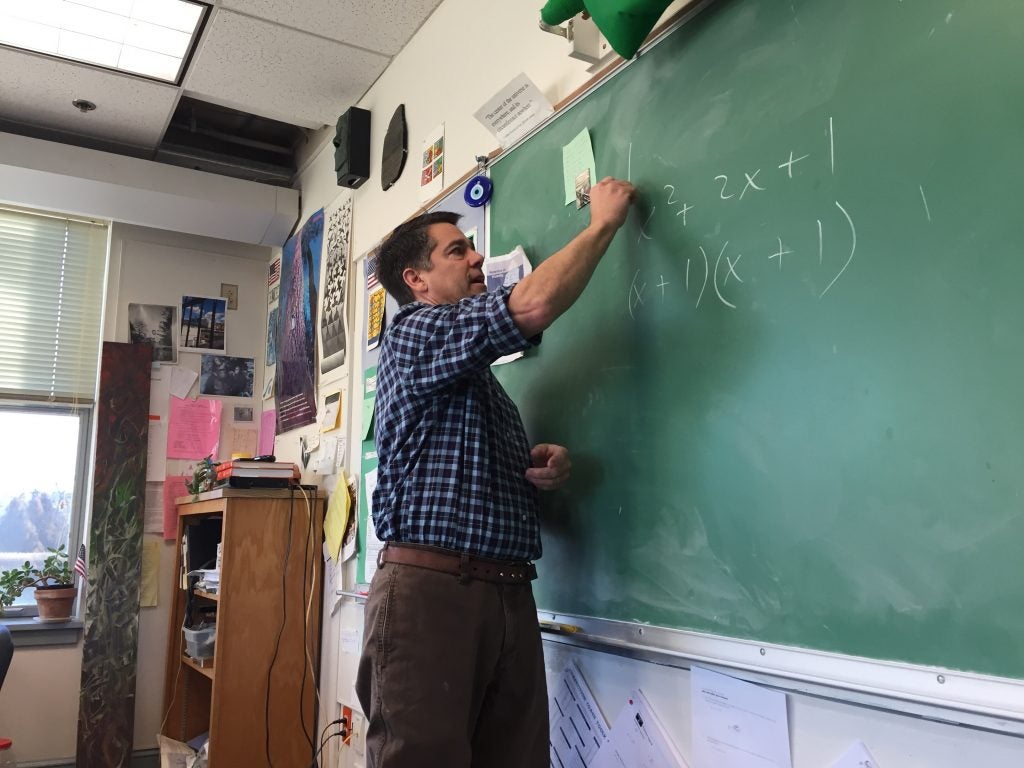
Some maps focused on creating an even split between the two parties or ensuring representation for racial minorities. Others aimed for geographic compactness, as measured by a class-created formula that compares a district’s area with its perimeter and then contrasts it with the shape of a square. One especially interesting arrangement included large “multi-representative” districts where an area would be assigned two or three congressional votes. The margin of victory in those area would determine the party of the representatives.
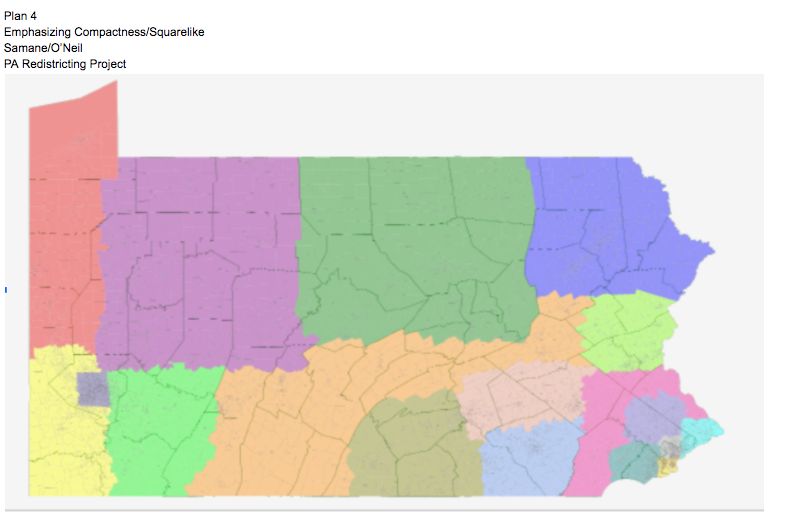
There was even a map called “flippity,” where randoms rolls of a die determined the pathway of district boundaries.
“The one that was generated randomly was way better” than the current version, said student Daniel Sellers-Johnston incredulously. “That should say something about the current map.”
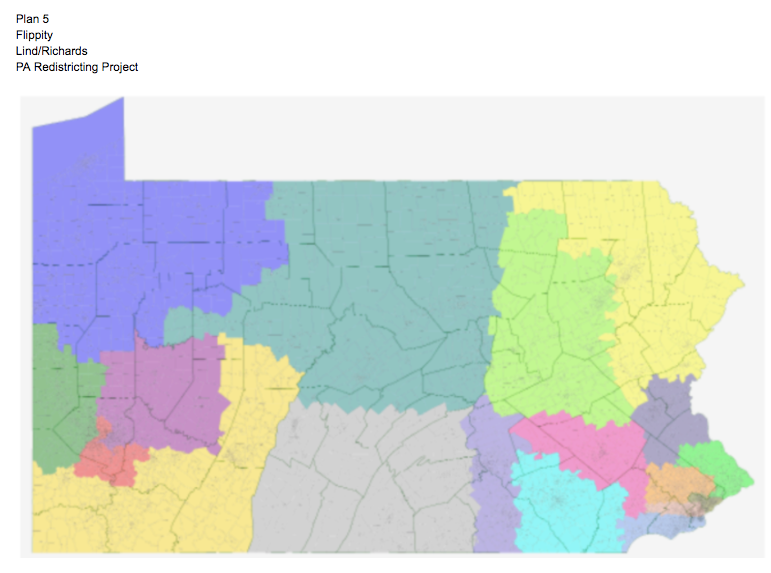
Creating a map that’s ‘too fair’
A lot of the students were surprised at how mathematically easy it was to generate new maps that looked less contorted than the status quo. That revelation, however, left them with an uneasy feeling about how government operates.
When asked how this project shaped the way they view politics, at least three used the word “corrupt.”
“I knew the government was corrupt, but I didn’t know it was this corrupt,” said Jake Richards with a chuckle.
“I saw our government is really, really corrupt,” said Siddhartha Sangwan. “It’s not equal at all.”
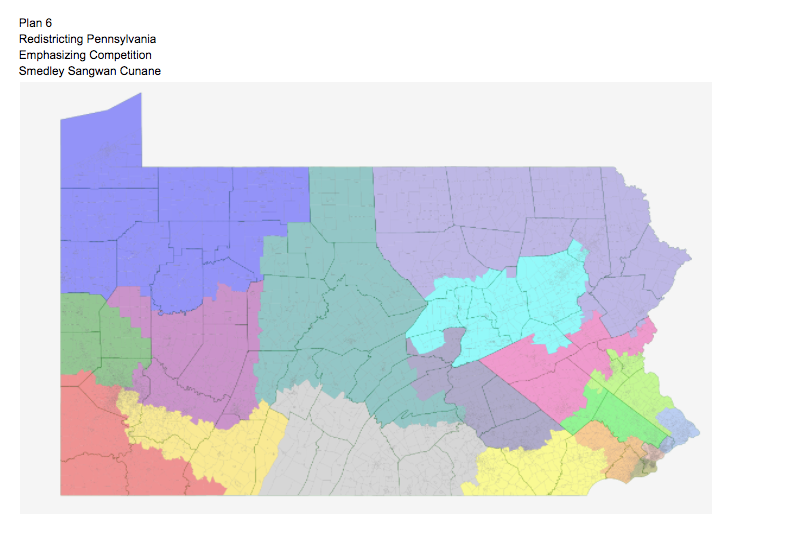
But where the kids see “corrupt,” the U.S. Supreme Court has so far seen only politics as usual. After decades of complaints from Democrats and Republicans, the court hasn’t come up with an objective legal standard for when political influence goes too far.
In an unprecedented move, the state Supreme Court did recently find reasoning to invalidate Pennsylvania’s map as a partisan gerrymander. But the debate is far from over. Wolf and top state Republicans are now in the midst of a showdown, pitting what one side sees as fair and competitive versus what the other sees as compact and legal.
Kimmel’s students see a big mess, one that could be cleaned up with some simple math and a commitment to nonpartisanship. They’ve sent their maps to some public officials and received positive feedback, though apparently one Democratic staffer in Harrisburg looked at their output and deemed it “too fair.”
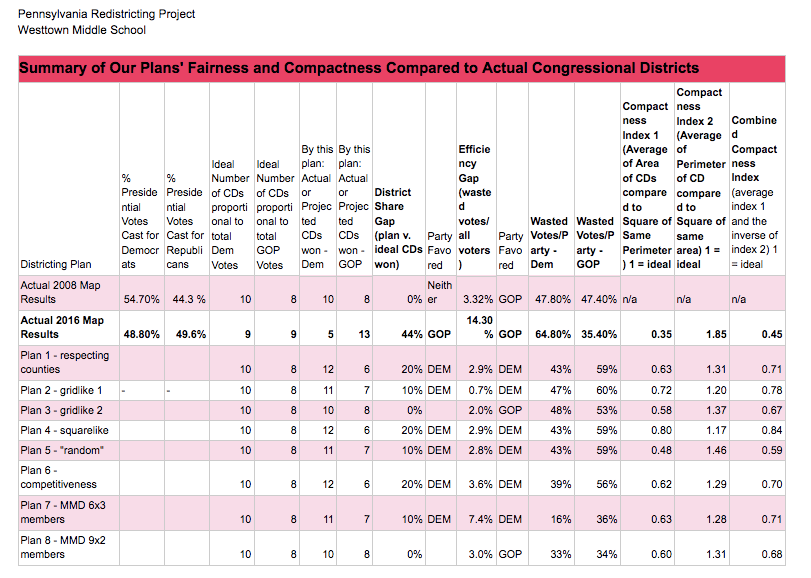
Asked if it was OK that this math-project-turned-civics-lesson seems to have jaded some of his students, Kimmel preferred a more optimistic takeaway.
“I think that they have seen that they can make some observations and do some work and come up with better ideas than adults have,” Kimmel said.
Kira O’Neil agreed.
“It shows me we can do it,” she said. “Eighth-graders can make a difference.”
WHYY is your source for fact-based, in-depth journalism and information. As a nonprofit organization, we rely on financial support from readers like you. Please give today.




